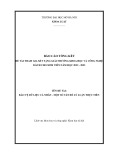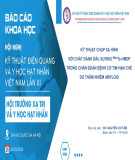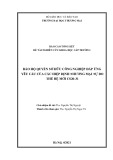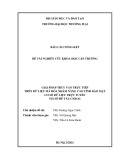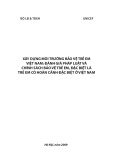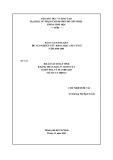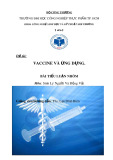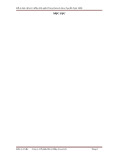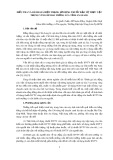
RESEA R C H Open Access
Fibronectin and laminin promote differentiation
of human mesenchymal stem cells into insulin
producing cells through activating Akt and ERK
Hsiao-Yun Lin
1,2†
, Chih-Chien Tsai
1,4†
, Ling-Lan Chen
1
, Shih-Hwa Chiou
1,3
, Yng-Jiin Wang
2*
, Shih-Chieh Hung
1,3,4*
Abstract
Background: Islet transplantation provides a promising cure for Type 1 diabetes; however it is limited by a
shortage of pancreas donors. Bone marrow-derived multipotent mesenchymal stem cells (MSCs) offer renewable
cells for generating insulin-producing cells (IPCs).
Methods: We used a four-stage differentiation protocol, containing neuronal differentiation and IPC-conversion
stages, and combined with pellet suspension culture to induce IPC differentiation.
Results: Here, we report adding extracellular matrix proteins (ECM) such as fibronectin (FN) or laminin (LAM)
enhances pancreatic differentiation with increases in insulin and Glut2 gene expressions, proinsulin and insulin
protein levels, and insulin release in response to elevated glucose concentration. Adding FN or LAM induced
activation of Akt and ERK. Blocking Akt or ERK by adding LY294002 (PI3K specific inhibitor), PD98059 (MEK specific
inhibitor) or knocking down Akt or ERK failed to abrogate FN or LAM-induced enhancement of IPC differentiation.
Only blocking both of Akt and ERK or knocking down Akt and ERK inhibited the enhancement of IPC
differentiation by adding ECM.
Conclusions: These data prove IPC differentiation by MSCs can be modulated by adding ECM, and these
stimulatory effects were mediated through activation of Akt and ERK pathways.
Background
Type 1 diabetes, caused by the autoimmune destruction
of pancreatic b-cells, is deficient in insulin and requires
exogenous insulin for treatment. Islet transplantation
offers a potential cure for type 1 diabetes [1]. However,
this approach is limited by a shortage of donor tissue
suitable for transplantation. One alternative to islet
transplantation is to implant a renewable source of insu-
lin-producing cells (IPCs).
Stem cells have the potential to multiply and differ-
entiate into any type of cells, thus providing cells that
can generate IPCs for transplantation.
Human multipotent mesenchymal stem cells (MSCs)
isolated from the bone marrow, can differentiate into
multiple mesenchymal cell types, including cartilage,
bone, and adipose tissues. They also display a neuronal
phenotype after induction with growth factors, neuro-
trophic factors or chemical products like retinoic acid or
3-isobutyl-1-methylxanthine (IBMX) [2-5]. Although
methods promoting neural differentiation have been
adapted to derive IPCs from embryonic stem cells [6-9],
such methods are insufficient to derive IPCs from MSCs
[10]. For future application of MSCs, many efforts have
been made to provide new protocols for differentiating
MSCs into IPCs [10-12].
Interaction of extracellular matrix proteins (ECM)
plays important roles in controlling cell proliferation,
motility, cell death and differentiation of stem cells or
progenitor cells. Pancreatic ECM mainly consists of
fibronectin (FN) and laminin (LAM). Pancreatic FN is
noted beneath the endothelial cells and epithelial ducts
[13], while LAM is mainly present in basement mem-
branes that form the interface between the epithelia and
connective tissues [14]. Both FN and LAM affect b-cell
* Correspondence: wang@ym.edu.tw; hungsc@vghtpe.gov.tw
†Contributed equally
1
Stem Cell Laboratory, Department of Medical Research and Education,
Veterans General Hospital-Taipei, Taiwan
2
Institute of Biomedical Engineering, National Yang-Ming University, Taipei,
Taiwan
Lin et al.Journal of Biomedical Science 2010, 17:56
http://www.jbiomedsci.com/content/17/1/56
© 2010 Lin et al; licensee BioMed Central Ltd. This is an Open Access article distributed under the terms of the Creative Commons
Attribution License (http://creativecommons.org/licenses/by/2.0), which permits unrestricted use, distribution, and reproduction in
any medium, provided the original work is properly cited.





